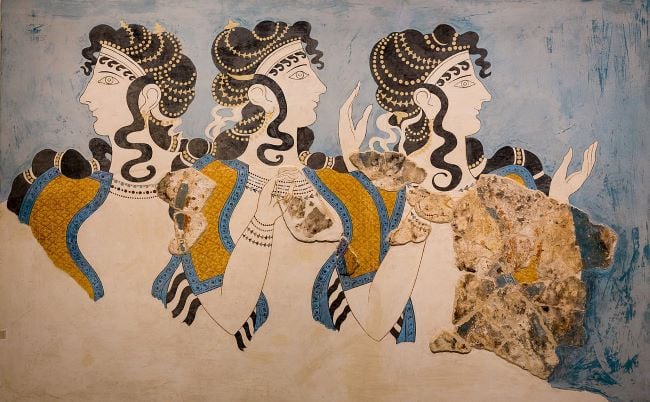
The innate desire to look good has been a part of the human experience since before recorded history. The people of Bronze Age Greece (c. 3200 – c. 1100 BC) were no exception, with the men and women of the Mycenaean and Minoan civilizations being very conscious of their beauty.
Even a cursory glance at the surviving frescoes and artifacts from this broad period reveals a myriad of colors and interesting styles the people belonging to these enigmatic civilizations dressed themselves in.
From the historian’s perspective, reconstructing the beauty standards of Bronze Age Greece is not an easy task. Less is known about Greece in the Bronze Age than in later epochs like the Classical and Hellenistic periods, of which a comparative wealth of materials is available. Nevertheless, enough remains in the archaeological record for us to construct a reasonable approximation of what Bronze Age Greeks looked like.
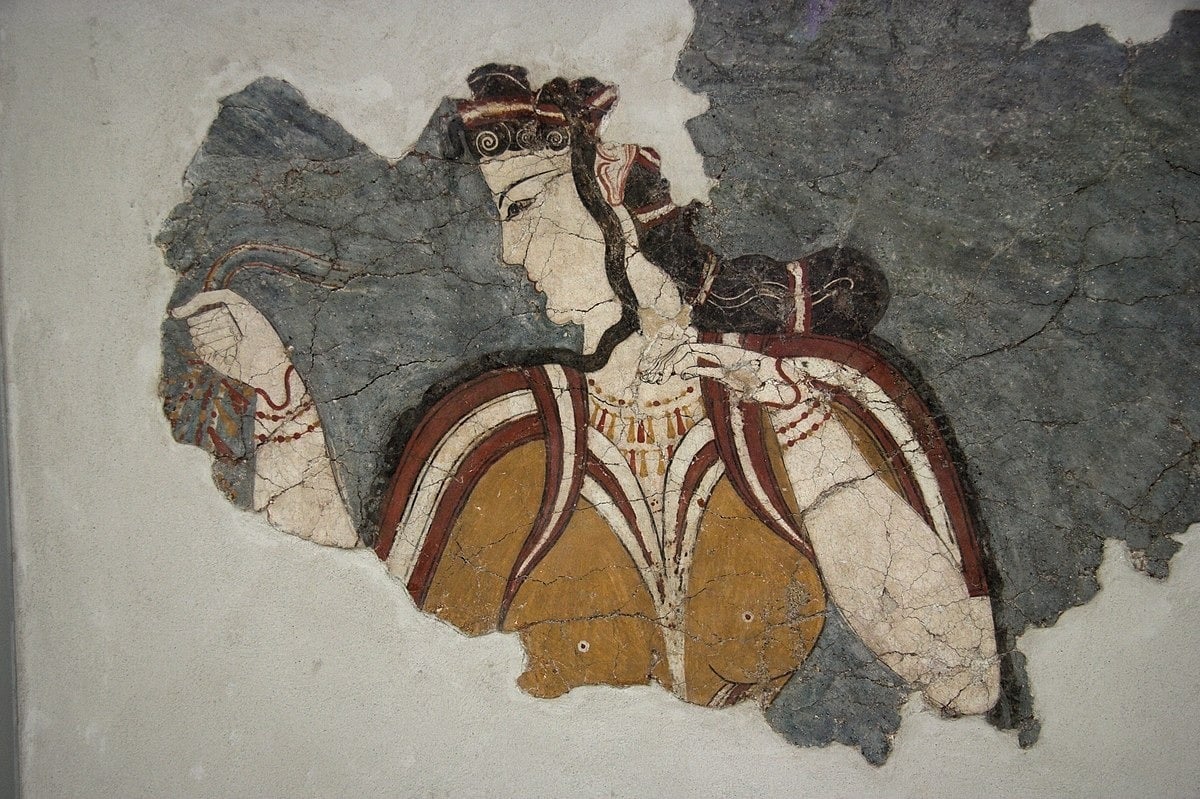
The beauty practices of women in Bronze Age Greece
Our understanding of the styles favored by Minoan women is quite extensive, owing to a wealth of surviving depictions found at Knossos, Akrotiri, and other areas of Minoan settlement and trade.
An exquisite illustration of Minoan attire can be found in the captivating Snake Goddess Figurine. This remarkable artifact showcases the quintessential elements of Minoan dress. The figurine portrays an elegant woman adorned in a flowing skirt adorned with flounces and layers that gracefully cascade to the floor. Her attire is complemented by a bodice featuring short sleeves and a delicately scalloped neckline with exposed breasts.
Surviving frescoes likewise suggest that vibrant and captivating fabrics, dyed in a myriad of colors, took center stage in Minoan fashion. The use of bold primary colors, including striking reds, vivid yellows, and deep blues, dominates the pattern scheme.
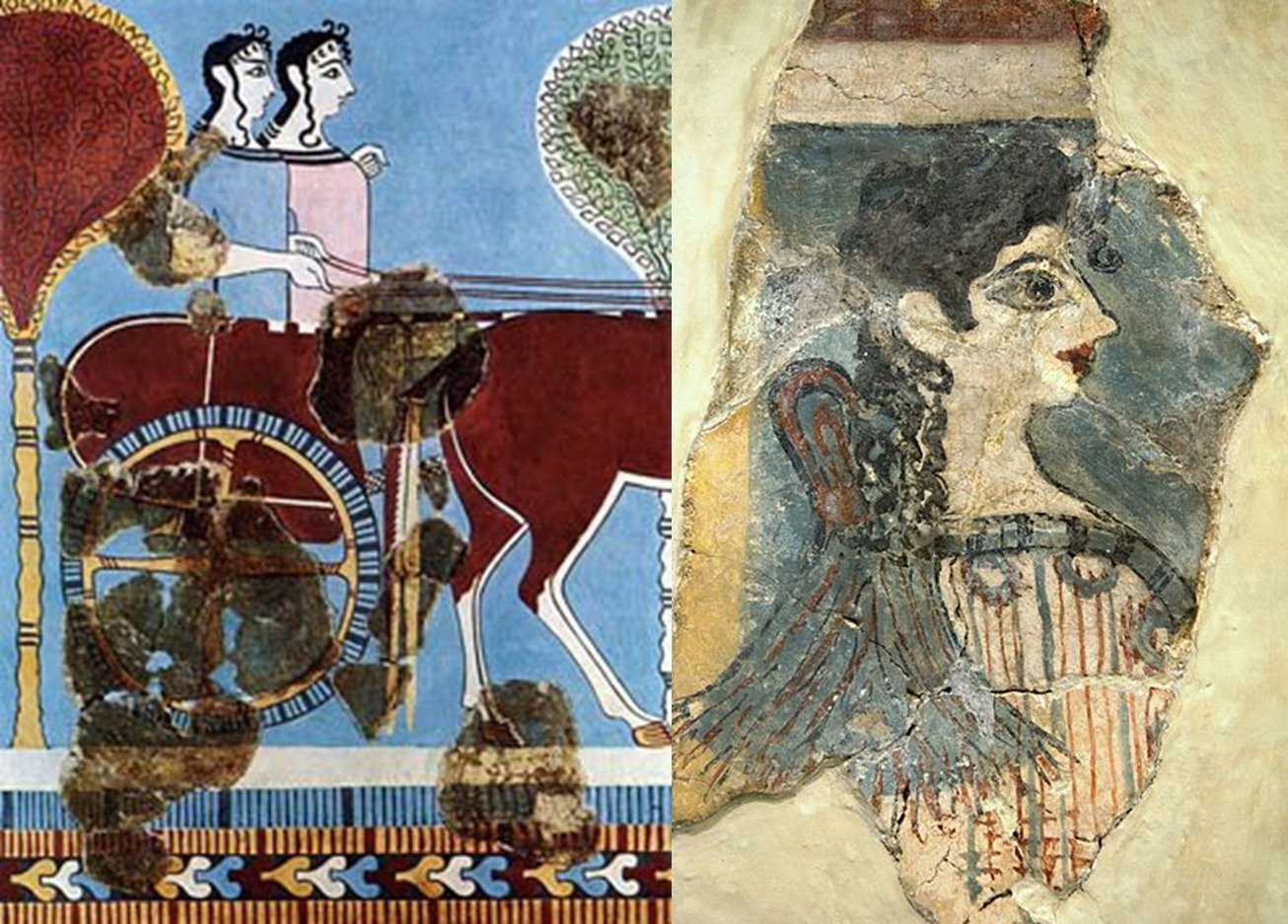
Another fascinating element of Minoan female attire was the practice of using corsets or tight belts to achieve an hourglass figure. Artworks indicate that the slim waistline was greatly admired in Minoan culture, and it’s possible that body modification methods were employed to achieve this desired look.
Beauty standards in mainland Greece during the Bronze Age were heavily inspired by the Minoans on Crete and elsewhere in the Aegean. Mycenaean women wore similar clothes to their Minoan counterparts, albeit a closed bodice was sometimes preferred which covered the breasts.
Makeup, hair, and accessories
Jewellery was also prized by Minoan and Mycenaean women and used to accentuate an already eye-catching look. Hoop earrings, necklaces, and bangles – perhaps not all that dissimilar from those we see today – were worn by Bronze Age women in Greece. Jewellery was made from gold, glass beads, and other materials.
Minoan frescoes typically depict women with exceptionally pale complexions, indicating a preference for lighter skin tones. Mycenaean artifacts hint at a similar preference. This in turn suggests that higher-class women may have kept indoors away from the sun. In some cases, what appears to be red blush on the cheeks of women can be seen in the frescoes.
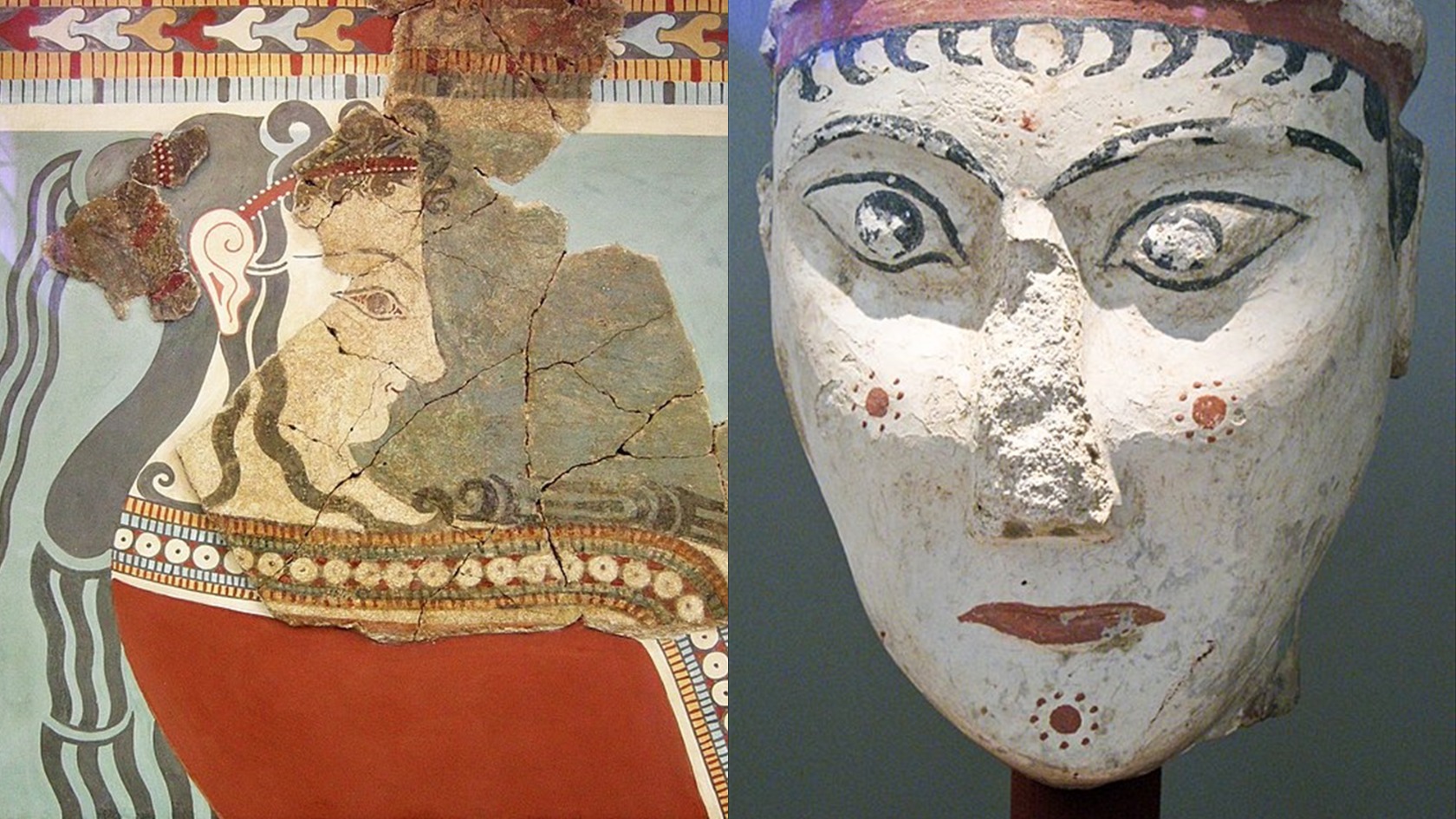
Some modern reconstructions of Minoan and Mycenean makeup include powders to whiten the skin with red blush applied to the cheeks or more prominent red patterns applied to the face, but it is difficult to determine whether the exaggerated appearance on the frescoes should be interpreted literally.
Minoan and Mycenaean women were typically depicted with black hair, which was braided into long tendrils or locks.
Bronze Age Greek men
The attire of Bronze Age Greek men was considerably less elaborate than that of their female counterparts. A further distinction between the Minoans and Mycenaeans is that the latter tended to dress ostentatiously.
Minoan men embraced a variety of garments such as breechcloths, loincloths, and kilts, which were often accompanied by a decorative codpiece. These were usually colored in vibrant hues of yellow, blue, and white. The torso typically remained bare but was ornamented with necklaces, bracelets, and bands encircling their biceps.
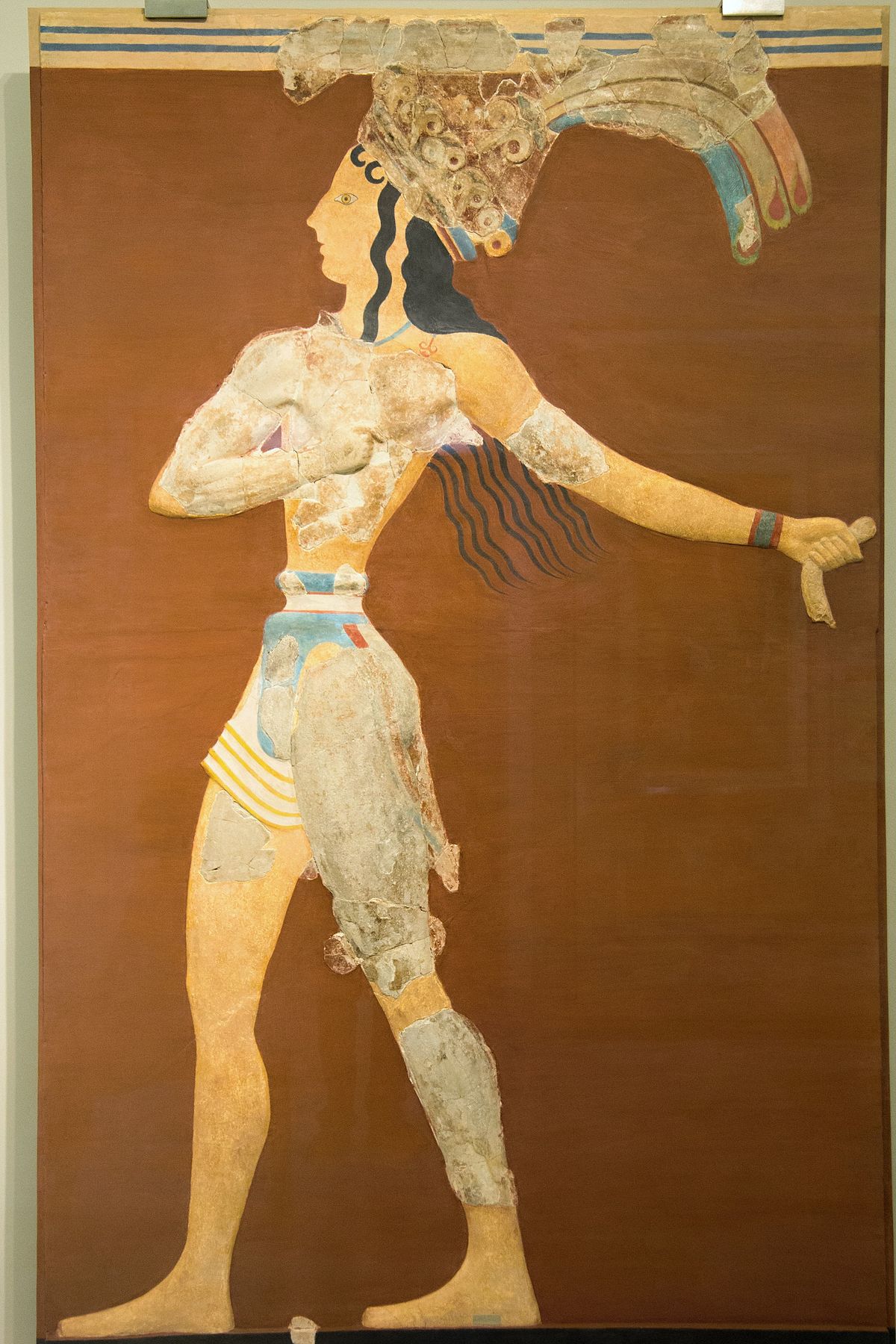
Minoan men also adorned themselves with distinctive hats featuring long, vibrant feathers that stood tall at the center. They are typically depicted as being clean-shaven.
Mycenaean men worse similar fashions but tended to cover up more with cloaks and sometimes tunics.
See all the latest news from Greece and the world at Greekreporter.com. Contact our newsroom to report an update or send your story, photos and videos. Follow GR on Google News and subscribe here to our daily email!



